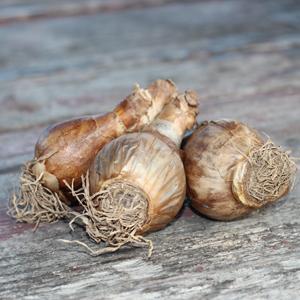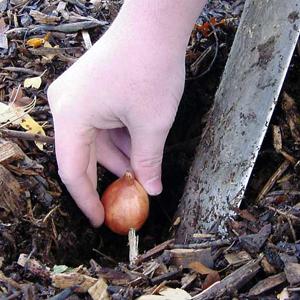Looking for a beautiful showing of flowers in the spring? Look no further than the bulb section of your local independent garden center! A large majority of the typical spring flowers we enjoy actually come from bulbs that are planted in the fall.
When should I plant spring bulbs?
September is typically the best month for not only planting bulbs but purchasing them as well. This is because bulbs purchased late in the fall season can be damaged and less viable. For the best-producing bulbs, purchase and plant early in the fall season.
How to select the best bulbs:
- Select the largest size bulb within the variety of flower you are looking to purchase. The size of bulbs can vary between different varieties of flowers.
- Be aware of the differences between the metric and U.S. (standard) systems of measurements. Many bulbs are imported from Holland and are sized by centimeters. As a point of reference, 2 ½ centimeters is equal to an inch.
- Check bulbs for bruising, mold, or mildew. Reject any bulb with green tips because this is a sign the bulb has begun to grow, making it less viable.
Where should I plant bulbs?
Perhaps you simply want splashes of color here and there, tucked amongst ornamentals. That’s the beauty of bulbs. Whether you’re looking for a little or a lot, the possibilities are endless with various types of flowers, colors, and choices between random plantings and structured designs.
Bulb flowers thrive and multiply in sun and shade. Avoid southern exposures, however, which can become too warm and shorten the length of the flower’s showing. The soil around a building’s foundation can also warm more quickly and give bulbs a false sense of when to bloom—only to be stunted by spring freezes.
How do I plant bulbs?
Bulbs require well-drained soil. If your soil is not well draining it would be best to improve the soil with organic matter such as compost, peat moss, or manure. If you’re unsure whether your soil drains fast or slow, dig a one foot by one foot hole and fill it with water. If it takes over 15-20 minutes for the water to drain, then the soil isn’t draining fast enough for bulbs.
When planting bulbs, dig a hole three to four times deeper than the diameter of the bulb. If your soil is sandy, then plant another two inches deeper. Water the planted areas well to establish sustainable roots. Keep the soil moist, but not soaking wet during this time. Then sit back and wait for a showy display of flowers next spring.
Some additional tips to consider:
Resist cutting foliage until it has completely died. The decaying foliage feeds the bulb for next year’s flowers. If the leaves and stems are unsightly, consider rubber-banding them.
Consider the very early-blooming crocus for a rustic, natural showing around trees, landscape edges and rock gardens. After the flowers are spent, the foliage can be just as beautiful.
If you have any questions about bulbs, or gardening in general, call us or reach out to us on our Facebook page today!




